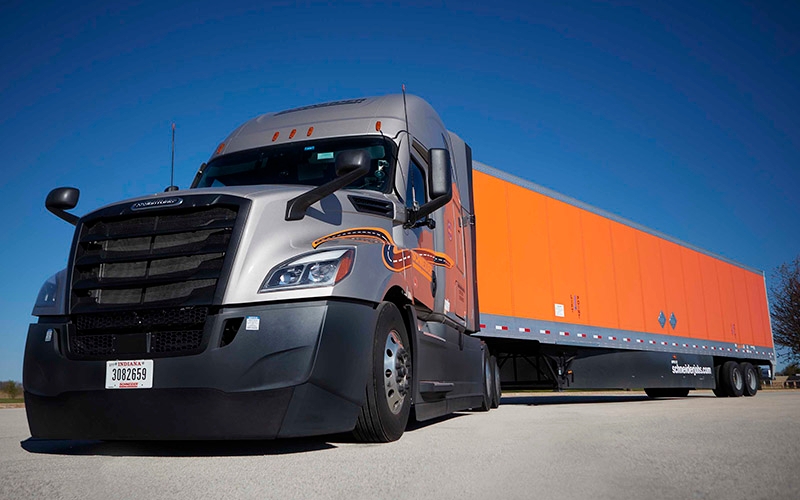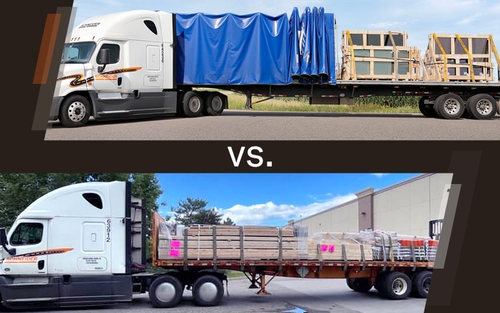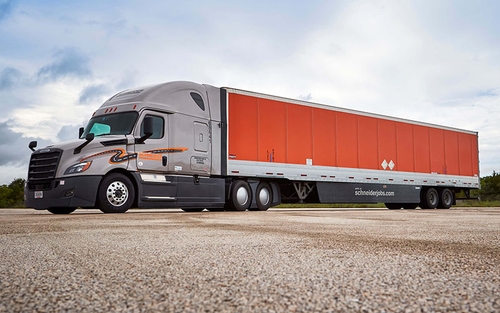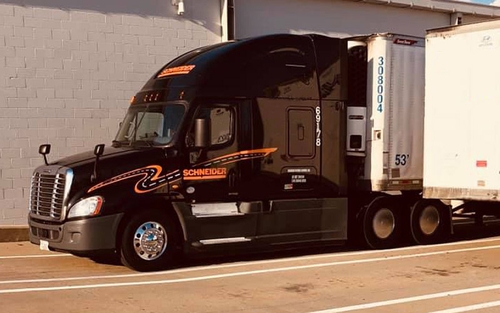Estimated reading time: 2 minutes
How did trucks get the name “semi”? Weighing in at up to 80,000 pounds and typically 70-plus feet long, there certainly doesn’t seem to be anything “partial” or “incomplete” about the massive vehicles.
If you’re wondering, “why is it called a semi-truck?” keep reading to find out how it got its name and what it really means.
Why is it called a semi-truck?
Despite what you may think, the "semi" in “semi-truck” actually refers to the trailer, not the truck itself. In fact, the name “semi-truck” is just a shortened version of “semi-trailer truck.”
This longer, lesser-used name more directly refers to the two parts that make up these large vehicles:
- A towing engine (more commonly known as the tractor, or truck), where the driver sits and controls the vehicle.
- One or more semi-trailers, which carry the freight.
What about all of the other names?
Why are 18-wheelers called semis, then? And why are tractor-trailers called semis? The answer is simply because “semi-truck,” or just “semi,” has become a catch-all term to describe the vehicles.
The name “semi-truck” has been used since the early 1900s and remains the preferred term mainly because it's more convenient to say than the other, longer options.
Though “semi” is the most popular, some other common terms include:
- 18-wheeler. Mostly used in the South.
- Tractor-trailer. Mostly used in the Northeast.
- Semi-truck-trailer.
- Big rig.
If you still find this a little confusing, you’re not alone. For example, what is the difference between a semi-truck and a semi-tractor, then?
While both “semi-truck” and “semi-tractor” describe the towing engine portion of the vehicle, you can also use “semi-truck” to describe the entire vehicle, and others will understand what you mean.
What is a semi-trailer?
Some of the key differences between a full trailer vs a semi-trailer are:
Axle position
- Semi-trailers only have rear axles, so half of the weight is supported by the back of the tractor.
- Full trailers have front and rear axles, so they can fully support themselves.
Connection type
- Semi-trailers connect to a tractor using a coupling mechanism known as a fifth wheel, which helps to distribute the load between the tractor and the trailer.
- Full trailers use a drawbar with a hook to attach to the tractor's hitch.
Capacity and use
- Semi-trailers are generally 48 to 53 feet long. This, combined with the fact that only half of a semi-trailer's weight is supported by its own axles, means they can transport heavier and larger loads.
- Full trailers can range from 20 to 40 feet long. They generally carry lighter loads and are used for short-distance hauls, commonly to factories, ports and warehouses.
You’re more likely to see a semi-trailer than a full trailer on the highway, as it is the preferred method of long-haul transportation. Semi-trailers are preferred since they allow for:
- A tighter turning radius.
- Easier backing ability.
- Trailers to be swapped/dropped off quicker and easier.
That being said, if you’ve ever come across a tractor hauling multiple trailers (which requires a doubles and triples endorsement) the rear trailer is often a full trailer.






